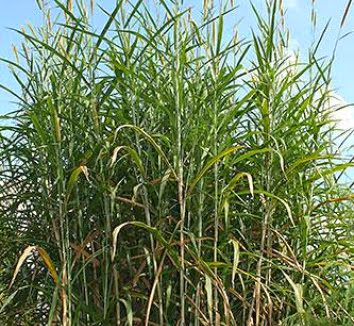 |
| Elephant grass - http://www.prairiestarflowers.com/ |
Pennisetum purpureum
 |
| Pennisetum purpureum |
It is a tall plant able to grow to 2-3.5 metres high, although there are reports of it reaching up to an impressive 7.5 metres. It is clump-forming and produces robust bamboo-like clumps with large, mid-green large leaf blades (up to 120 cm long) with a prominent whitish central vein.
Its flowers are borne on a dense, bristly false spike usually yellow-brown in colour, though occasionally greenish or purplish. It is popular as an animal feed crop as it will tolerate growing in poor, dry conditions.
Saccharum ravennae
 |
| Image credit - http://www.greenleafnursery.com/ |
Native to southern Europe and western Asia, this particular species of elephant grass is a large, aggressive species also from the Poaceae family.
It is the smallest of the three species producing erect stems up to 4 meters in height, and serrated leaves up to 1 meter long.
The flowers take the form of plume-like panicle of spikelets which are covered in white or pale-colored silky hairs. It will grow best grows in moist and wet habitat such as marshes and riverbanks.
Miscanthus sinensis
 |
| Image credit - http://www.ksuturf.org/OrnamentalGrasses/ |
Miscanthus sinensis forms dense clumps and is widely cultivated as an ornamental plant in temperate regions around the world. The flowers are purplish, held above the foliage. It will grow quite happily in most fertile, moist but well-drained soil in a position of full sun.
It may require additional watering in sandy or free draining soils. Of the three species Miscanthus sinensis is arguably the most ornamental for garden use and has a large selection of attractive cultivars to choose from.
For related articles click onto the following links:
FESTUCA GLAUCA - The Blue Fescue







No comments:
Post a Comment